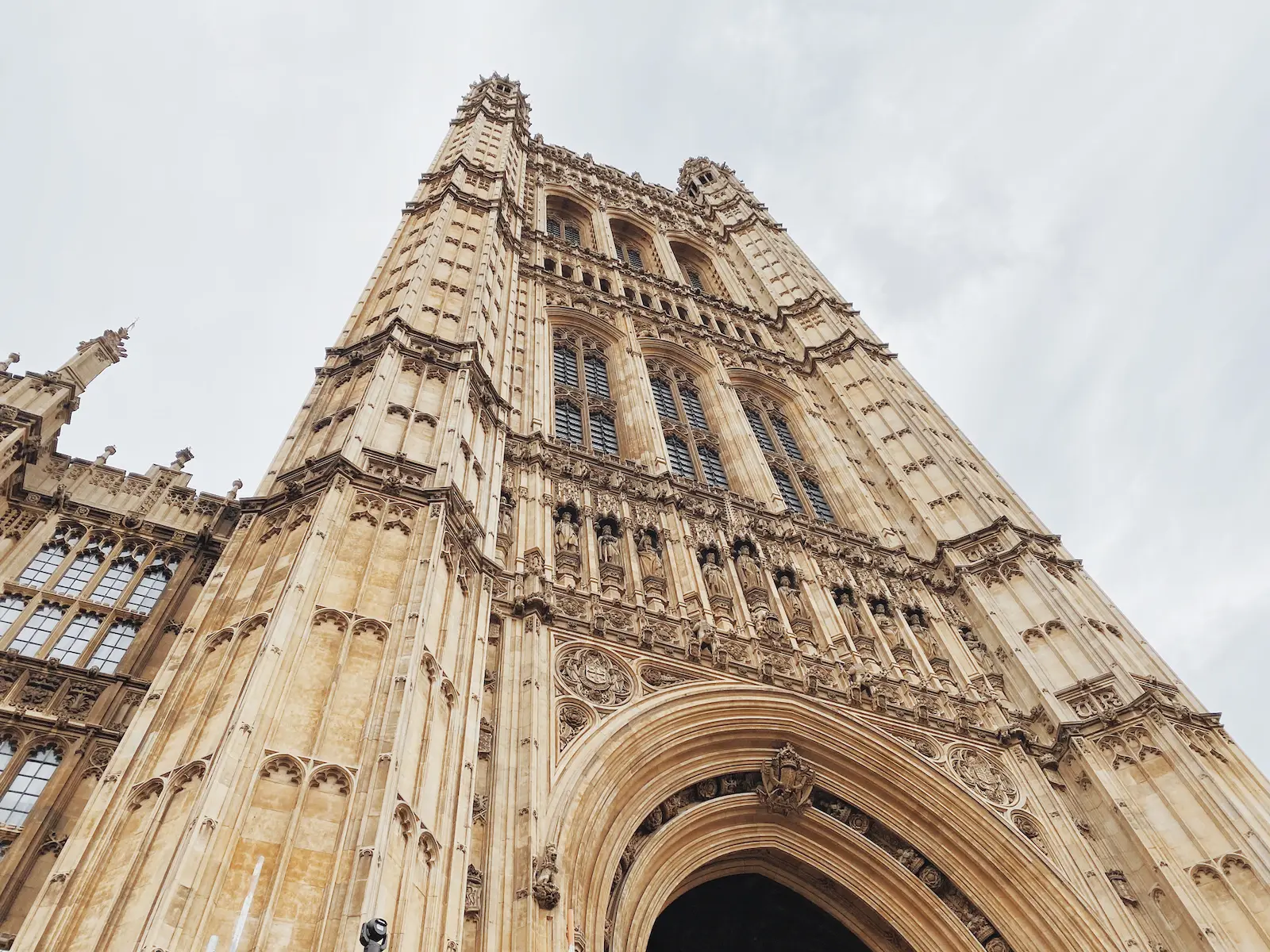

Welcome to The Houses of Parliament Virtual Tour
Welcome to the Houses of Parliament 360° virtual tour; discover the history, art, and architecture of the building and discover what happens at UK Parliament. Immerse yourself in the 360° walkthrough of the Palace of Westminster. Take an extensive route through its most famous (and not-so-famous) rooms, including some areas ordinarily off-limits to the public.
Central Lobby
Royal statues
The arches surrounding the high windows of the Lobby are decorated with statues of kings and queens of England and Scotland from Edward I.
The 48 sculptures were created by John Thomas and Thames Bank Workshop and look down at the central crossroads of the palace, between the House of Commons and Lords.
Patron Saint Mosaics
The constituent parts of the UK are represented in mosaics depicting the four patron saints of England, Ireland, Scotland and Wales.
St George for England and St David for Wales were designed by Edward Poynter and created by the Venetian firm, Salviati in the late 19th century.
St Andrew for Scotland and St Patrick for Ireland were not undertaken until the 1920s. Robert Anning Bell, a champion of the mosaic technique was commissioned to design them and Gertrude Martin, led a team of female mosaicists in their production.
The Post Office
A House of Commons Post office was established in 1698 after a Select Committee recommendation in 1695. This Select Committee was set up in response to the investigation of Richard Frogatt; apprehended after being found to have stolen many Members letters from their unsecure location in wooden boxes outside the Chamber.
Encaustic tiles
The term ‘encaustic’ means ‘burnt in’. This technique ensures the pattern lasts as the tile wears. It was much used in medieval times but was lost during the Reformation and revived again early in the 19th century.
Encaustic tiles can be seen throughout the Palace of Westminster, notably here in Central Lobby and St Stephen’s Hall.
The desk
Central Lobby is open to the public when either the House of Lords or the House of Commons is sitting. Staff on the reception desk assist visitors meeting Members or attending select committee meetings. They will also do their best to help people who wish to lobby their MP but do not have an appointment.
Commons Gallery entrance
The Admission Order Office issues tickets for the galleries of the House of Commons Chamber.
Tickets are needed for entry to Prime Minister's Question Time in the Commons but are not required for other debates in the Commons or the Lords.
Grilles
In the windows surrounding Central Lobby you can see metal grilles. These grilles were originally built to cover the Ladies' Gallery in the House of Commons Chamber, ensuring that MPs were not distracted by the sight of women. The grilles also obstructed the view of the women inside, making them a powerful symbol of the exclusion of women from Parliament.
Suffragettes targeted the Ladies' Gallery during the period of campaigning for votes for women in the early 20th century. In 1908 two suffragettes chained themselves to a grille as a protest. It had to be removed from the window to allow the women to be cut free.
The grilles were finally removed permanently from the gallery and placed here in Central Lobby following a vote in the House of Commons in August 1917.
Chandelier
The chandelier, designed by Augustus Pugin in collaboration with Hardman & Co is the largest in the Palace; it was originally lit by gas and converted to electricity in the 1880s. A winch in the roof above was used to lower the chandelier to the floor below to make it easier for cleaning.
House of Commons Chamber 1
Plaques commemorating MPs killed while being an MP
There are a number of heraldic shields in the House of Commons Chamber commemorating each of the MPs killed while serving as an MP.
Ladies’ Gallery
The Ladies' Gallery was created after the fire of 1834. Before this, women who wanted to watch proceedings in the Commons Chamber had to do so via a ventilation shaft in the ceiling, which was restricted and uncomfortable. The Ladies' Gallery, created by Charles Barry, had windows covered with heavy metal grilles, which made it difficult to see or hear. The grilles became both a physical and metaphorical symbol of women's exclusion from Parliament, and later a target of suffragette agitation.
Public Gallery
The galleries you see above and around the Chamber are for members of the public and the press to watch debates.
Mace
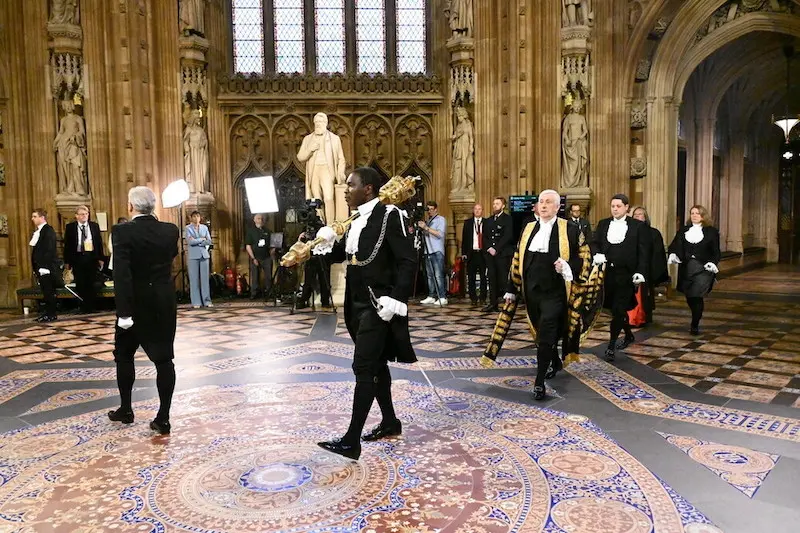
The mace in Parliament is the symbol of royal authority and without it, the House cannot meet or pass laws.
The House of Commons mace is a silver gilt ornamental club of about five feet in length, dating from the reign of Charles II. It is not seen here because it is only in place when the House is sitting.
Each sitting day, the mace is carried to the Chamber at the head of the Speaker's procession by the Serjeant at Arms. It is placed on the table of the House, except when the House is in committee, when it rests on two brackets underneath the table.
Red lines
Members may speak only from where they were called. They may not speak from the floor of the House between the red lines.
Prayer cards
Each sitting in both Houses begins with prayers that follow the Christian faith. In the Commons the Speaker's Chaplain usually reads the prayers. In the Lords, a senior bishop, Lord Spiritual, will read them.
MPs can use prayer cards to reserve seats in the chamber for the remainder of that sitting day.
Members must attend prayers otherwise their prayer card, and reserved seat, is removed.
House of Commons Chamber 2
The Despatch boxes
Much of the action in the House of Commons takes place at the two iconic Despatch boxes on each side of the Chamber.
The Prime Minister and the Leader of the Opposition sit directly behind their respective boxes on opposite sides of the Chamber. Government Ministers and Shadow Ministers also sit along the front bench. All frontbenchers use their sides' Despatch box when they speak.
Despatch boxes were originally used by Members of Parliament to carry documents into the Commons Chamber. The Despatch boxes in use today were made in England from gifts of Puriri wood from New Zealand and designed by Sir Giles Gilbert Scott to replace the boxes destroyed in the Second World War bombings.
House of Commons Chamber 3
The Despatch boxes
Much of the action in the House of Commons takes place at the two iconic Despatch boxes on each side of the Chamber.
The Prime Minister and the Leader of the Opposition sit directly behind their respective boxes on opposite sides of the Chamber. Government Ministers and Shadow Ministers also sit along the front bench. All frontbenchers use their sides' Despatch box when they speak.
Despatch boxes were originally used by Members of Parliament to carry documents into the Commons Chamber. The Despatch boxes in use today were made in England from gifts of Puriri wood from New Zealand and designed by Sir Giles Gilbert Scott to replace the boxes destroyed in the Second World War bombings.
House of Commons Chamber 4
Speaker’s Chair
The Speaker acts as a chairperson in debates and is appointed after a vote amongst MPs.
The Speaker presides over and controls debates and makes sure neither Government nor opposition MPs dominate proceedings. Members must 'Catch the Speaker's eye' by standing to indicate that they wish to speak.
The Speaker or one of the Deputy Speakers must always be in the Chair during the parliamentary day.
The Speaker’s chair was destroyed in the Second World War bombings. A new chair had to be created based on a replica given to Australia in 1926 by the UK branch of the Empire Parliamentary Association. The chair is made of Blackbean wood donated by Australia from Northern Queensland and was made by H.H. Martyn & Co. Ltd., of Cheltenham, England.
The Table of the House
The Table of the House sits between the Government and opposition sides. There are three seats at the table where experts in procedure (called Clerks) sit. They support the Speaker of the House in checking business is being conducted properly.
At the other end of the table there are brackets which hold the Mace.
The table was a gift from Canada and is made from Canadian oak, it is one of the few pieces of furniture not made in the United Kingdom, it was made by the Globe Furniture Company of Ontario, Canada.
Benches
MPs who do not hold ministerial positions are called backbenchers. They stand to speak from where they are sitting.
Government backbenchers sit on the benches to the Chair’s right, the Opposition on the seats to the left of the Chair. All other parties and independents sit on the farthest left bank of seats.
There are fewer seats than there are MPs. This allows for a more intimate debate when only a small number of Members are present.
House of Commons Chamber 5
AYE Lobby 1
AYE Lobby 2
AYE Lobby 3
Furniture (gifts from Nigeria)
Following the war countries of the Commonwealth gave gifts of wood, or contributed the cost of materials to mark the rebuilding of the House of Commons Chamber after damage during the Second World War.
For example, Nigeria and Uganda supplied eight armchairs and three tables to furnish the division lobbies. The furniture is made from Iroko, a large hardwood tree from the west coast of tropical Africa which can live up to 500 years. The furniture was made by J.L. Green and Vardy Ltd., Islington, London.
Gifts also included inkwells from Hong Kong and Grenada as well as oak and brass octagonal lamps from the Leeward Islands and Gibraltar.
House of Lords Chamber 1
Statues of the Magna Carta Barons
The statues above the galleries represent 16 barons and 2 bishops known by name to have sealed the Magna Carta. This document, fundamental to English law and underpinning many other constitutions around the world, was forced upon King John (1167-1216) by barons tired of his demands for funding disastrous campaigns, amongst other issues. The statues had been intended to be cast in copper, but rising costs led to 15 of the statues being cast in zinc and electro-coated in copper and bronzed.
Crossbenches
Around 200 members of the Lords are not members of any party. These peers are referred to as crossbenchers. They act and vote independently of party lines, and are often appointed due to their expertise and professional experience.
Public Gallery
Members of the public are able to visit the Lords and see proceedings on any working day.
The clock
There is no guillotine, or set time limit, to work on a draft law, or bill, as it passes through the Lords. In addition, there is no limit to the number of members who can take part in scrutinising a draft law. All members of the Lords can also insert amendments to Bills at a later stage of proceedings than their counterparts in the Commons.
This means that legislation in the Lords can be examined in fine detail at all stages.
House of Lords Chamber 2
Opposition benches
Opposition party members in the House of Lords sit here. Although the government may have the most seats in the House of Commons, it doesn’t necessarily follow that and is rare for a government to command a majority in the House of Lords.
Despatch boxes
Government ministers and opposition shadow ministers debate legislation and policy from here each working day.
When a new member of the House of Lords is sworn in, they may do so on a holy book. The despatch boxes contain holy texts that members can swear on such as the Bible, the Torah, the Koran and the Bhagavad Gita. Members may also provide their own holy book.
As well as the ceremony, members also agree to the members’ code of conduct, which governs their participation and behaviour while a member of the House of Lords.
House of Lords Chamber 3
Frescoes
The frescoes in the chamber reflect the purpose and function of the House of Lords. There are themes of ‘Chivalry’ for the Lords Temporal, ‘Religion’ for the Lords Spiritual and ‘Justice’ for the Law Lords. Each subject was depicted both as an allegory and as a historical subject.
Three historical events reflecting these themes are depicted in the paintings above the throne - King Ethelbert of Kent being baptised by St Augustine represents the theme of Religion and depicts the official introduction of Christianity into Britain.
On the opposite wall above the Public Gallery, we find the allegories which complement the historical paintings.
Government benches
Most government departments have at least one minister who sits in the Lords. As well as allowing members with professional experience and expertise to join the government, this allows the House of Lords house to hold the government to account.
Each sitting day, during Oral Questions, members of the Lords start by questioning Government Ministers in the Chamber to find out what they are doing, or propose to do, on any subject. Ministers in the Lords are also questioned after they make statements on behalf of the government; if an urgent statement is made in the Commons it is repeated in the Lords so members can press the government on issues of the day.
Accessible Floor Area
The composition of the House of Lords is characterized by its diversity, disabled peers do participate in processes and discussions. ‘The mobile bench’ refers to the area in the chamber in front of the crossbenches which is reserved for members attending in wheelchairs.
Despatch boxes
Government ministers and opposition shadow ministers debate legislation and policy from here each working day.
When a new member of the House of Lords is sworn in, they may do so on a holy book. The despatch boxes contain holy texts that members can swear on such as the Bible, the Torah, the Koran and the Bhagavad Gita. Members may also provide their own holy book.
As well as the ceremony, members also agree to the members’ code of conduct, which governs their participation and behaviour while a member of the House of Lords.
House of Lords Chamber 4
Statues of the Magna Carta Barons
The statues above the galleries represent 16 barons and 2 bishops known by name to have sealed the Magna Carta. This document, fundamental to English law and underpinning many other constitutions around the world, was forced upon King John (1167-1216) by barons tired of his demands for funding disastrous campaigns, amongst other issues. The statues had been intended to be cast in copper, but rising costs led to 15 of the statues being cast in zinc and electro-coated in copper and bronzed.
The Throne
The throne in the Lords Chamber represents the Sovereign, the third part of law-making along with the Commons and Lords. Once the Lords and Commons have agreed on the final text of a bill, it receives Royal Assent – a formality showing the Sovereign’s approval.
The Sovereign comes to Parliament for the ceremonial opening of a new parliamentary session – the State Opening of Parliament. At this ceremony the Sovereign sits on the throne in the House of Lords Chamber to read a speech that sets out the government’s agenda for the coming year.
The throne was designed by Augustus Welby Pugin in 1847 and made by John Webb. Pugin was influenced by St Edward’s Chair, popularly known as the Coronation Chair, which sits in Westminster Abbey. The 44 enamels and crystals that decorate the throne were made by Hardman & Co, who made a lot of the metalwork in the palace
The woolsack
The woolsack is where the Lord Speaker sits. In 1938 it was re-stuffed with a blend of wool from Britain and the other wool producing nations of the Commonwealth.
The Lord Speaker is elected by Members of the House of Lords. Their role is to preside over business, act as an ambassador for the work of the upper chamber and represent the Lords at important events such as state visits.
The Lord Speaker does not regulate business in the Chamber as the Commons Speaker does. The House of Lords relies on the Members to keep order themselves.
Voting Lobbies (Lords) 1
Door to Moses Room
The Moses Room is a parallel chamber where members of the Lords conduct detailed scrutiny of the small print in legislation. It is here that they put their expertise to good use, looking at specific issues where experience is key.
Voting Lobbies (Lords) 2
Members' Corridor 1
Members' Corridor 2
Members' Corridor 3
Members' Lobby 1
Members' Lobby 2
Statues of Prime Ministers
Members Lobby has statues of seven prominent Prime Ministers of the 19th and 20th centuries. The two statues either side of the entrance to the chamber depict David Lloyd George by Uli Nimptsch and Winston Churchill by Oscar Nemon, the Prime Ministers of the First and Second World Wars respectively.
Opposite Churchill stands the statue of Baroness Margaret Thatcher by Antony Dufort, the first person to be honoured in this way by the House whilst still living. The 4th statue is Clement Attlee by Ivor Roberts-Jones, who was Prime Minister from 1945 to 1951.
The Churchill Arch
The arch leading into the Chamber itself is known as the Churchill arch. It was Winston Churchill who suggested that the arch be rebuilt from the original bomb-scarred stone as a monument to the ordeal endured at Westminster during the war. It also serves as a reminder to future generations of the fortitude of those who stood firm through those times.
MPs message and letter boards.
Notes or letters may be left for MPs while they are working in the Chamber or in Committee in the message and letter boards. MPs’ names are automatically illuminated when there is a message for them.
Members' Lobby 3
Judas Window
Each year at the State Opening of Parliament, the Sovereign sends a senior official, Black Rod, from the House of Lords to the House of Commons.
It is custom for the door to be slammed as Black Rod approaches the Commons Chamber. Black Rod then knocks three times on the door. The Serjeant at Arms (a senior official in the House of Commons) looks through the grill (called a Judas Window) to check that it is only Black Rod and no 'soldiers'. He then allows the Door to be opened for Black Rod to enter. Black Rod bows to the Speaker requests that the MPs come to the Lords Chamber to hear the Sovereign’s speech.
This tradition dates to the Civil War and specifically, when King Charles I stormed into the Chamber while his soldiers stood nearby; the king tried to arrest MPs he believed were plotting against him.
Door to the Chamber
Members enter here each day for oral questions. This is the beginning of business each day when government ministers are grilled from all sides of the House about what government is doing.
Division bell lever
The doorkeepers’ chairs on either side of the Churchill Arch contain a lever for setting the division bells ringing. The doorkeepers guard the entrance to the chamber whenever the House is sitting.
Peers' Corridor 1
Civil War Paintings
Peers' Corridor is decorated with scenes from the Wars of the Three Kingdoms by Charles West Cope. Each scene was specifically chosen to depict the struggles through which national liberties were won.
One scene shows the Speaker, William Lenthall, preventing Charles I from arresting five Members of the House of Commons for treason. This was a key event in the run up to the outbreak of the English Civil Wars (1641-1651).
Its depiction here is symbolic of a basic principle of the constitution to prevent absolute rule by the monarch.
Peers' Corridor 2
Lords entrance
This corridor is where a bill passes between both Houses during ‘ping pong’ – because both Houses have to agree on the final text of a draft law, successive drafts are sent back and forth from each chamber through Peers’ Corridor.
Central Lobby entrance
Peers’ Corridor sits along the central spine of Parliament, between the two halves where Members of each house work on behalf of the public to check and challenge government.
Peers’ Lobby sits directly in line between the Commons Speaker’s chair and the Throne in the Lords Chamber.
Red bench
Members of the public queue here while waiting to enter the Public Gallery in the House of Lords Chamber to watch members at work – checking and challenging government, making laws, or debating the issues of the day. Entrance to the gallery is free and no tickets are required.
Peers' Corridor 3
Peers' Lobby 1
Standing desk
It is thought that originally there were more standing desks designed by Augustus Welby Pugin for the new Palace of Westminster.
Documents in the Public Records Office dated to August 1851 detail that four additional desks were needed and that existing ones in the House of Lords Libraries could be used if the craftsmen needed to see them.
They have a variety of different carvings on them including a scale like pattern on the legs and carved oak leaves on the main panel. Oak leaves and acorns are a prevalent design feature throughout the palace, showing the coherent design scheme.
Peers' Lobby 2
Live broadcast point
Members are interviewed here about topical issues that affect the legislation and scrutiny work in the Chamber.
Peers' Lobby 3
Door to attendants’ office
This is where mail from the public to members of the Lords is brought in. The public can contact members for assistance in topic areas in which peers have expressed an interest.
Door to the chamber
Members enter here each day for oral questions. This is the beginning of business each day when government ministers are grilled from all sides of the House about what government is doing.
Prince's Chamber
Queen Victoria statue
The large white marble statue of Queen Victoria holding a sceptre and a laurel crown dates from 1855. It was carved by the sculptor John Gibson. It is a dominating feature in the Prince's Chamber with the Queen standing 2.44m high. The statue is flanked by figures of Justice and Mercy, while the pedestal panels represent commerce, science and industry.
Portraits of monarchs
The Prince’s chamber holds 28 portraits depicting royal figures from the Tudor history. They were painted by Richard Burchett and his pupils from the Central Training School for Art (now the Royal College of Art) between 1854 and 1860.
The portraits are designed to evoke the style of the Tudor period but were painted much later. They are made to look as though they are painted on gilded leather but are actually oil paint on timber panels.
Armada paintings
A series of paintings of the Spanish Armada of 1588 looks down on the room from high level. These are based on tapestries that hung in the House of Lords from the 1650s until they were destroyed in the fire of 1834.
Just one painting was completed in the 19th century. This was painted by Richard Burchett and hangs directly above the statue of Victoria. The series was only finalised in 2010 when the final five pictures were completed by artist Anthony Oakshett, and the full set was installed.
Pugin Tables
This is where peers often meet outside the chamber to discuss work. Discussions here are often about compromise over amendments to Bills, or how to make compromises during ‘ping pong’ with the Commons.
The octagonal tables were designed by architect Augustus Welby Pugin in 1847, specifically to accommodate small conferences. They are some of the most interesting and elaborate of Pugin's tables and would have originally had polished tops rather than leather.
Doorkeepers’ boards and pigeon holes
Doorkeepers can pass on messages to peers from members of the public they are working with; messages are also left here for them to pick up.
Door to the Chamber
Members enter here each day for oral questions. This is the beginning of business each day when government ministers are grilled from all sides of the House about what government is doing.
Royal Gallery 1
Portraits of Monarchs
Portraits of monarchs and their consorts from George I to Elizabeth II line the walls of the Gallery. Many of them are copies of portraits held in the Royal Collection. The portrait of Elizabeth II by Sir James Gunn was specially commissioned in 1954 and the Duke of Edinburgh by A C Davidson-Houston was painted in 1971.
Line of route
The Royal Gallery is on the route the Monarch takes for State Opening to the Lords Chamber and is where the Monarch lists the government’s agenda that both Houses of Parliament will be working on in the coming year.
Royal Gallery 2
The Meeting of Wellington and Blucher
This waterglass painting by Daniel Maclise was commissioned in 1858 for the new Palace of Westminster and depicts the Meeting of Wellington and Blucher after the Battle of Waterloo. The central scene shows Wellington mounted on his horse, meeting with the Prussian Marshal Blücher at the La Belle Alliance after the Battle of Waterloo in 1815: Wellington’s single and final victory over the French Emperor Napoleon.
It took Maclise several years to paint this large work. It was finally finished in 1861.
The Death of Nelson
This waterglass painting by Daniel Maclise commissioned for the new Palace of Westminster in 1863, depicts The Death of Nelson on board the Victory at the Battle of Trafalgar in 1805.
Waterglass was a new technique that was developed in Germany. Maclise introduced it to Britain in 1859. It was initially successful but the conditions of the Victorian era – the burning of coal, for example, took its toll on the murals in the Royal Gallery as the vivid paintwork became covered in a greyish film. Recent conservation projects have removed layers of dirt from the surface of the paintings.
Tables & Chairs
When not in use for formal occasions, the Royal Gallery is another space where Members of the House of Lords can meet with members of the public and pressure groups on issues of interest.
In addition to its historical significance, the room is a modern working environment – it is Wi-Fi enabled for example, making it a productive workspace for members.
The furniture was designed by Augustus Welby Pugin in the 1840s, including the x-frame chairs with carved lion heads and gilt Tudor roses stamped into the leather. These were made by John Webb and Holland and Sons, famous furniture makers of the time.
Heraldry/shields
The sovereigns and their consort's heraldic shields are depicted below the windows. The shields in the windows show the arms for English kings and queens on the West side and for Scottish on the East side.
Royal Gallery 3
War memorial
A glass case and wall memorial commemorate the names of the 408 members of the House of Lords who gave their lives during the two world wars. In front of this case is a block of timber from the jetty used during the evacuation of Dunkirk by the British Expeditionary Force in 1940. There is also a wooden box containing sand from each of the five beaches used in the D-Day Normandy landings.
Royal Gallery 4
Receptions and addresses
The Royal Gallery has been used for receptions for visiting foreign statesmen and dignitaries.
World leaders including President Clinton and Chancellor Merkel have addressed both Houses of Parliament from this point.
Robing Room 1
Chair of State
The Chair of State is provided for the Monarch's use as they prepare for the State Opening of Parliament. The chair was designed by the architect Edward Barry and supplied by the furniture makers F and J.C Crace. It sits beneath an embroidered Cloth of Estate depicting the Royal Arms and the monogram of Queen Victoria who was the monarch when it was made in 1869.
Parliamentary archives
Above the Robing Room the Parliamentary Archives of both Houses of Parliament are stored in the Victoria Tower. The fire of 1834 destroyed most of the records of the House of Commons but those of the House of Lords, which were stored across the road in the Jewel Tower, survived.
The archive includes all Acts of Parliament since 1497 and key constitutional documents such as the Death Warrant of Charles I (1649) and the Bill of Rights (1689). Members of the public can arrange to view items from the Archives' collections in the public search room.
Ceiling
The ceiling ribs form a complex pattern. The panels between them are decorated with symbols of royalty and Parliament, such as the Portcullis.
Robing Room 2
Frescoes by William Dyce
The walls of the Robing Room are decorated with scenes from the legend of King Arthur. The semi mythical monarch represented for the Victorians the beginning of their national history. The Victorian era saw a resurgence of interest in the Arthurian legends and their chivalric code of behaviour. The Scottish artist William Dyce was commissioned to produce the scheme in 1847.
Working from Thomas Malory's epic romance of King Arthur, Dyce concentrated on the virtues displayed by the Knights: "Religion", "Courtesy", "Generosity", "Hospitality", "Mercy", "Fidelity" and "Courage".
The first three murals were completed by 1852. His work progressed slowly in the following years and the scheme remained incomplete at his death in 1864. "Fidelity" and "Courage" were never executed.
Armstead Carvings
The carvings along the Robing Room walls reflect, like the frescoes, the virtues of the Knights of the Round Table through tales and legends associated with King Arthur.
The sculptor Henry Armstead was commissioned to carve a series of oak bas reliefs to show scenes from the Arthurian legend. The carvings extend along each wall beneath Dyce's frescoes.
Robing Room 3
Marble fireplace
The fireplace in the room was designed by Edward Barry; made of marble of different colours from the British Isles, it contains two cast-brass statuettes depicting St George fighting the Dragon and St Michael overcoming the Devil.
Podium Position
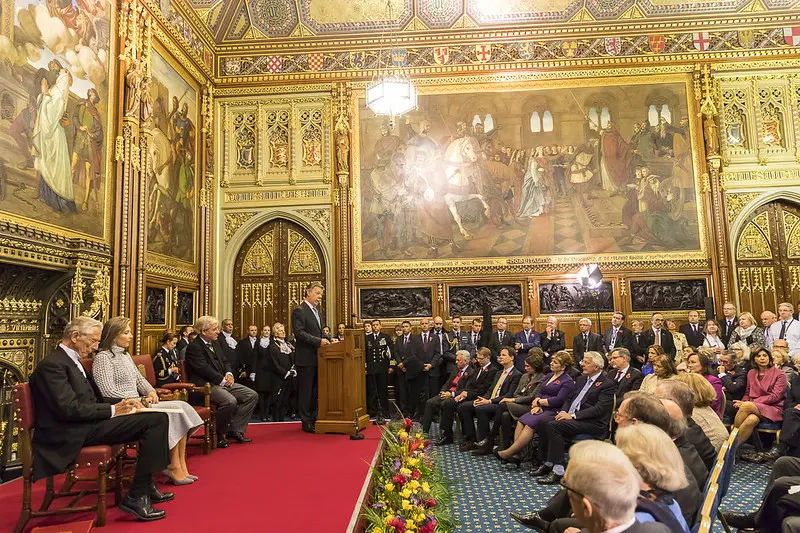
This section of the room hosts a stage and podium when international dignitaries give addresses in the Robing Room.
Recent speakers have included President Jimmy Carter and Colombian president and Nobel Peace Prize laureate Juan Manuel Santos.
Norman Porch
Busts of Prime Ministers
As set out by the Fine Arts Commission in 1847, the original intention was to have statues of Norman Kings here (hence the name Norman Porch), with later kings and queens lining each subsequent room however this project was never realised. The busts were added in the 1960’s.
Norman Porch contains the busts of some of the Prime Ministers who have also sat in the House of Lords or been raised to the peerage thereafter. The busts include the 2nd Earl Grey 1764-1845, the Duke of Wellington 1769-1852 and Lord Palmerston 1784-1865.
Stained glass windows
The two stained glass windows were designed by Augustus Welby Pugin. They depict Edward the Confessor, who built the original Palace and Queen Victoria, during whose reign the new Palace was built.
Norman Porch
Sovereign’s steps
The Monarch arrives at the Sovereign's Entrance each year for the State Opening of Parliament. The Royal party will then make their way up these steps towards the Robing Room in advance of making their way to the House of Lords Chamber. It is during the State Opening of Parliament that the Monarch outlines the Government’s agenda for the year and what both Houses will be working on.
St Stephen's Hall 1
Statues of Parliamentarians
Statues of famous parliamentarians face one another on either side of the Hall; these include John Hampden, Robert Walpole (the ‘first’ Prime Minister), William Pitt and Charles James Fox. They would have spoken on this site when it was the location of the House of Commons Chamber.
The spur on the back of one of the statue’s boots was damaged when members of the suffragette movement chained themselves to statues in St Stephen’s Hall in 1909.
Stained Glass Windows
The 10 stained glass windows in St Stephen's Hall show 150 shields of arms of Britain's boroughs, cities and towns. Designed by Augustus Welby Pugin, they were made by Birmingham firm John Hardman & Co.
The same firm restored the windows when they were damaged during air raids in the Second World War.
Floor tiles
The floor in St Stephen’s Hall is made up of encaustic tiles. These are the patterned, fired clay tiles which are used on the Principal Floor of the Palace. In all areas of the Palace
St Stephen's Hall 2
Benches
Today, the seats in the hall can be used by visitors while they are waiting to visit the public galleries.
Historically though, there would have been choir stalls here as the hall is a former chapel and the location of the House of Commons until the fire of 1834. These seats were used by Members of the choir and later the House of Commons. This layout is mirrored in both the House of Commons and the House of Lords today where the parties still sit opposite one another.
St Stephen's Hall 3
Mosaics
The mosaics by Robert Anning Bell relate to St Stephen.
Above the entrance to Central Lobby, St Stephen stands between a crowned soldier, King Stephen, and a crowned saint, Edward the Confessor, symbolising the strength and aspiration of good government.
Above the St Stephen’s porch entrance at the other end of the hall, Edward III is shown commanding the construction of St Stephen’s chapel. Kneeling before him is his Master Mason, Thomas of Canterbury.
Floor studs
In 1547, when the College of St Stephen was dissolved, the chapel became the first debating Chamber of the House of Commons, remaining in use for almost 300 years.
The Speaker's chair was placed on the steps to the altar; its position is indicated on the floor of the present hall by four round studs. MPs bowed as a mark of respect to the Speaker each time they entered or left the Chamber. To this day MPs bow to the Speaker.
Westminster Hall 1
Westminster Hall 2
Diamond Jubilee Window
The stained glass window by John Reyntiens was presented to Her Majesty Queen Elizabeth II on 20 March 2012 as a gift from Members of both Houses on the occasion of her Diamond Jubilee.
Members from both Houses across political parties funded in full, by personal contribution, the creation and installation of the window.
Consisting of up to 1,500 pieces, it takes its inspiration from 17th century heraldic art and the country’s long tradition of stained glass.
The roof
The hammer beam roof of Westminster Hall is the largest surviving medieval timber roof in Northern Europe. It was commissioned by Richard II in 1393 to transform the Norman Hall to reflect his position as the head of what was at the time the most sophisticated court in Europe.
Art and photography exhibitions
Westminster Hall is used as an exhibition space for material from the Parliamentary Heritage and Archive collections.
Westminster Hall 3
Floor plaques: Lyings-in-state
The plaques on the floor commemorate the lyings-in state of significant figures such as Winston Churchill, the Queen Mother, George VI, Edward VII and most recently Queen Elizabeth the II.
Westminster Hall 4
White Harts
Besides commissioning a new roof for Westminster Hall, King Richard II (1377-99) was also responsible for several other embellishments. Many of these emphasised the sacred character of his kingship.
The King's personal emblem, the white hart, was repeated along the Hall's string course.
Westminster Hall 5
Roof lantern
The roof lantern was used as a way of letting smoke escape from Westminster Hall when open fires were lit, most often used at large banquets and when the Hall was used a market place.
Original Norman Wall
The wall seen within this box is part of the original Norman wall that has been kept uncovered for the public to see. The remainder of the wall is now hidden behind protective surface.
Gate entrance to St Mary’s Undercroft
The Chapel of St Mary Undercroft was built by King Edward I in 1297. The Chapel of St Stephen located directly above was further developed under Edward II and finally completed by Edward III in around 1365. Although the Chapel is not open to visitors, the Undercroft is still used as a place for weddings and baptisms.
Suffragette Emily Wilding Davison famously hid overnight in the broom cupboard here to be included in the Palace census of 1911.
Westminster Hall 6
The Statues of Kings
In 1385 King Richard II (1377-99) commissioned 13 Reigate stone statues as part of his work to remodel the Norman Hall. Six remain in the hall on either side of the main steps. The statues would have been painted and gilded originally but the vivid decoration has been lost over time.
They are not likenesses of individual monarchs and it is generally accepted that they would have represented each of the kings from Edward the Confessor to Richard II.
War Memorial Window
The large stained glass window at the south end of St Stephen's Porch contains the service badges, coats-of-arms or initials of members and staff of both Houses who died during the Second World War. Below there is a memorial to those killed during the First World War.
The first southern window was installed in Westminster Hall when the original Norman Hall was remodelled in the 1390s. A new window was constructed in the 1840s after the great fire of 1834 and this, in turn, was destroyed in an air raid in 1940 and was replaced with the current window, designed by Sir Ninian Comper.
The top of the steps
State visits or visits by other leading figures are often marked by a speech given to Members of both Houses of Parliament from the steps of Westminster Hall. Speakers in recent years include Pope Benedict XVI, President Barack Obama and President Nelson Mandela.
Plaques on the floor at the top also commemorate important historical events that took place here when the Hall was used for legal proceedings, such as the trial of King Charles I in 1649.
Westminster Hall 7
New Dawn
New Dawn is a contemporary sculpture by Mary Branson commemorating the long campaign that led to some women gaining the vote in 1918, and all women in 1928.
It was unveiled on 7 June 2016, the 150th anniversary of the first mass petition submitted to Parliament calling for women's suffrage.
Made from metal and illuminated glass, New Dawn's design draws on concepts and imagery connected with Parliament and the campaigns for the enfranchisement of women.
Select Committee Room 1
3 - Witness giving evidence to a House of Lords select committee 02/11/21
2 - Witnesses giving evidence to House of Commons select committee. 14/03/17
1 - Minister attending a House of Commons select committee as a witness. 25/04/18
Witnesses
Committees invite members of the public with relevant experience, industry experts and other interested groups to share their insights and expertise on the issues being examined in the committee inquiry.
This can be given as written evidence or oral evidence during a select committee meeting. This is invaluable as individuals affected by an issue can give their perspective, informing members of the committee on what action might need to be taken.
This adds weight to the committee's recommendations, particularly if they gather a diverse range of evidence.
Click on the video play buttons to look at examples of witnesses giving evidence to a Commons select committee and a lords select committee.
Government Minister
Government ministers are often asked to attend oral evidence sessions as witnesses. This allows the committee to question the minister about their department’s policies.
Click on the video play button to see the Home Affairs Select Committee questioning a minister.
Committee Members (MPs/Peers)
On average there are 11 committee members on a Commons select committee and 12 on a Lords select committee.
In the House of Commons, membership is determined by the party-political balance in the House and members are elected by their parties to sit on specific committees.
On Lords select committees there are 4 Labour, 4 Conservative, 2 Liberal Democrat and 2 Crossbench Peers chosen by the Lords Committee of Selection, so there is no majority for any party or group, just like in the Lords chamber.
The Committee of Selection is made up of fellow Members of the House of Lords.
Press
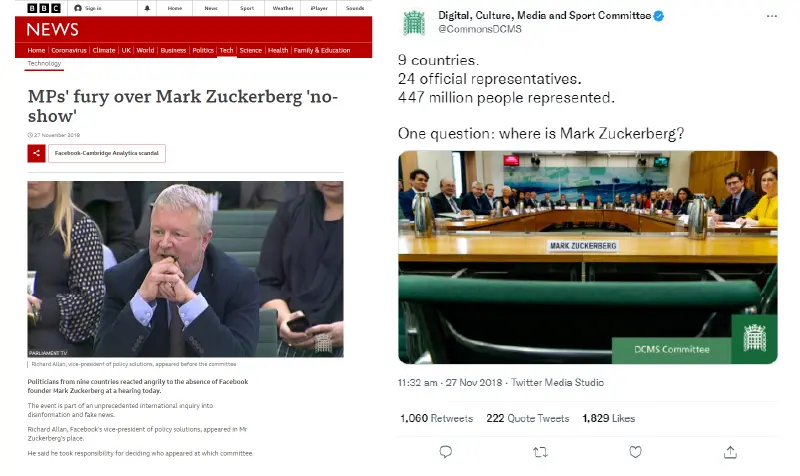
Credit: from BBC News at bbc.co.uk/news
Members of the press attend committee meetings to learn about what the inquiries are examining. They can then share this information with the public through different media outlets. Press coverage can help widen public awareness of proceedings so the public are better informed about who is responsible for decisions and the reasons those decisions are taken.
Select Committee Room 2
Chair
Chairs have a key role in setting the committee's agenda, facilitating committee meetings, and overseeing final reports.
Chairs of most Commons select committees are backbench MPs elected by the House of Commons by secret ballot. Parties are allocated a number of chairs based on their party-political balance in the House of Commons.
Chairs of Lords select committees are proposed by the Committee of Selection with the agreement of party whips; unlike in the House of Commons, there is no set understanding that a particular committee is chaired by either government or opposition parties
Committee Clerk and Committee Staff
The Committee clerk oversees preparatory work for the committee so they can conduct their inquiries.
They sift through submitted written evidence, prepare for oral evidence sessions, and assist in drafting committee reports. Committee staff support the chair and committee members in their work.
They circulate briefings, possible lines of questioning and any other information to keep committee members informed. They organise visits across the UK and further afield for Members to gather further information as part of their inquiries.
Public
Usually, people can attend most committee meetings in person. Committee meetings are also broadcast online at https://www.parliamentlive.tv/Committees
Hansard
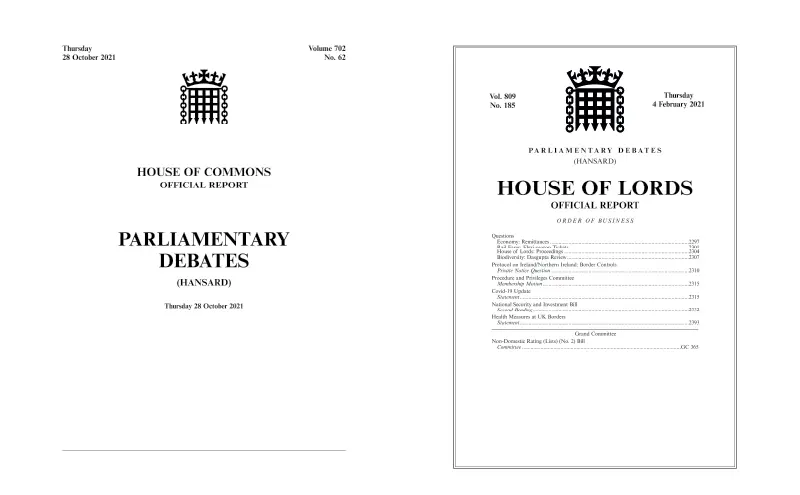
Hansard is the official report of Parliamentary debates since 1909. Hansard reporters record the minutes of select committee meetings and oral evidence sessions in both Houses. Transcripts are published on the committee's webpages usually within 48 hours.
Public Bill Committee Room 1
4 - House of Commons public bill committee 26/10/21
Opposition Backbenchers
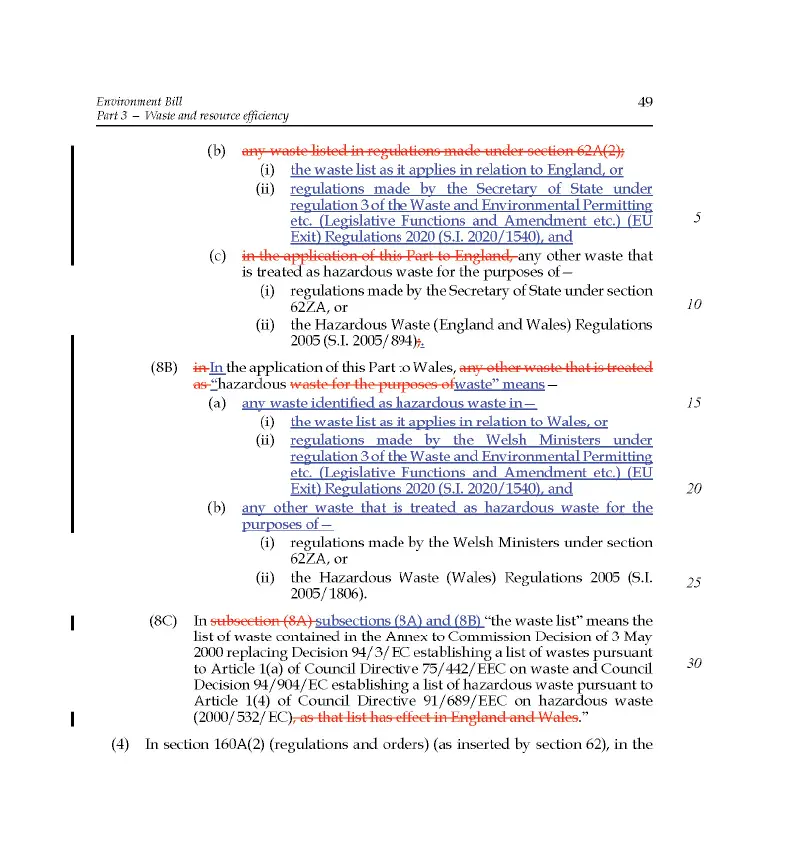
Backbench MPs from the main opposition and other opposition parties sit here.
They also scrutinise the bill and can propose and vote on amendments to the bill.
Evidence taking powers
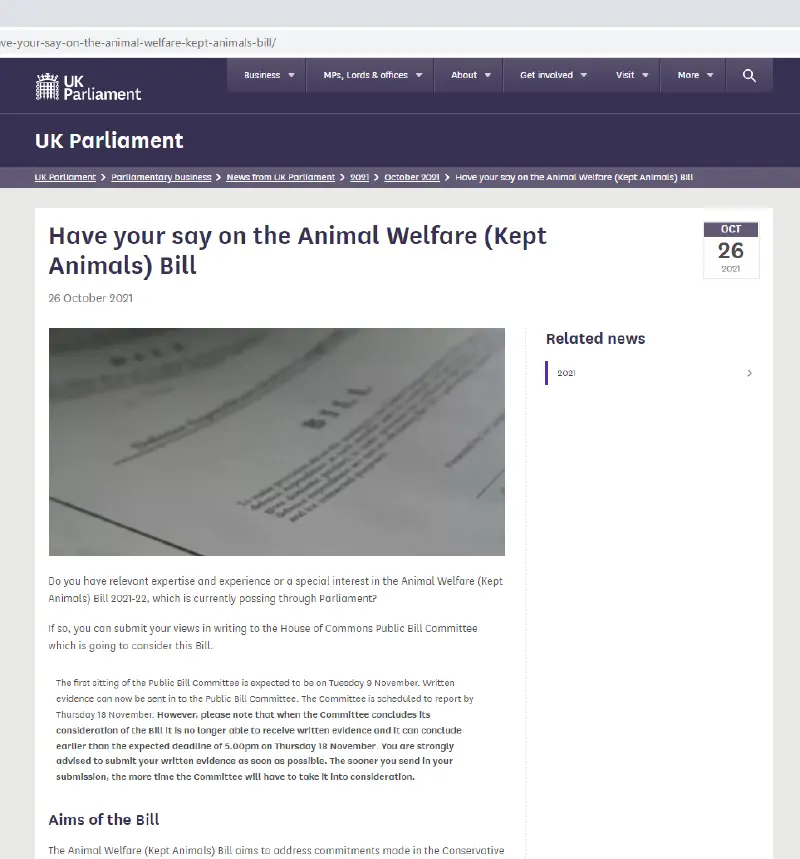
Public Bill Committees allow MPs to receive written and oral evidence from organisations, members of the public and other interested parties. This helps with their detailed consideration of a bill.
Government Backbenchers
Backbench MPs from the party in government sit on the government side of the Public Bill Committee room.
They scrutinise the bill line-by-line, suggest amendments, and can speak and vote on any changes proposed to it.
Public
Usually, people can attend most committee meetings in person. Committee meetings are also broadcast online at https://www.parliamentlive.tv/Committees
Press
Members of the press sometimes attend public bill committee meetings to learn about the progress of bills at committee stage.
They can then share this information with the public through different media outlets.
Press coverage can help widen public awareness of proceedings so the public are better informed about who is responsible for decisions and the reasons those decisions are taken.
Public Bill Committee Room 2
4 - House of Commons public bill committee 26/10/21
Civil Servants
Civil servants from various government departments support government ministers and the committee in providing information about the bill being scrutinised.
Chair
The chair ensures the smooth running of the Public Bill Committee meetings; they are impartial and don't share their opinions or take part in any questioning.
Chairs of Public Bill Committees are selected by the Speaker of the House of Commons at the start of the parliamentary year.
Clerk
The committee clerk supports the committee's work by circulating evidence to committee members, liaising with witnesses, being on hand to provide procedural guidance to the chair and recording the minutes of proceedings.
Hansard
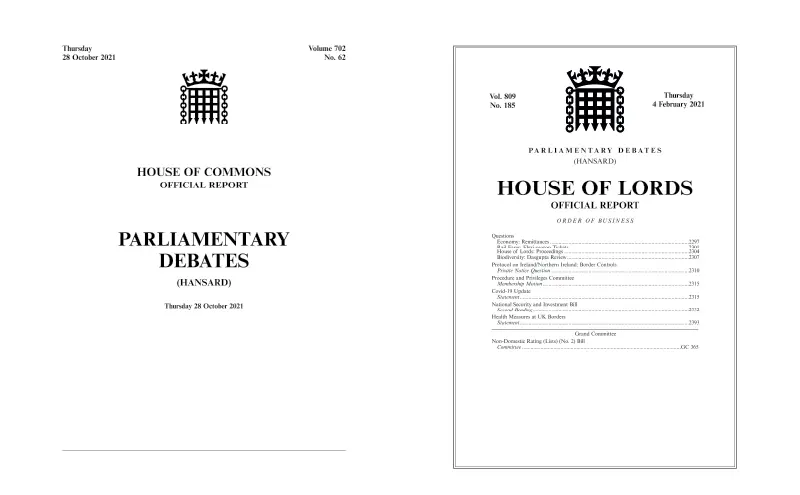
Hansard is the official report of Parliamentary debates since 1909. Hansard reporters record the minutes of committee meetings and oral evidence sessions in both Houses. Transcripts are published on the committee's webpages usually within 48 hours.
Official Opposition Spokesperson
A shadow minister attends to represent the perspective of the main opposition party in terms of amendments they would like to make to the bill.
Government Minister
Government ministers attend Commons Public Bill Committee meetings to make the government's case for the bill and to explain its provisions.
This is also the case in the House of Lords because there is always a minister for each department in the Lords chamber.